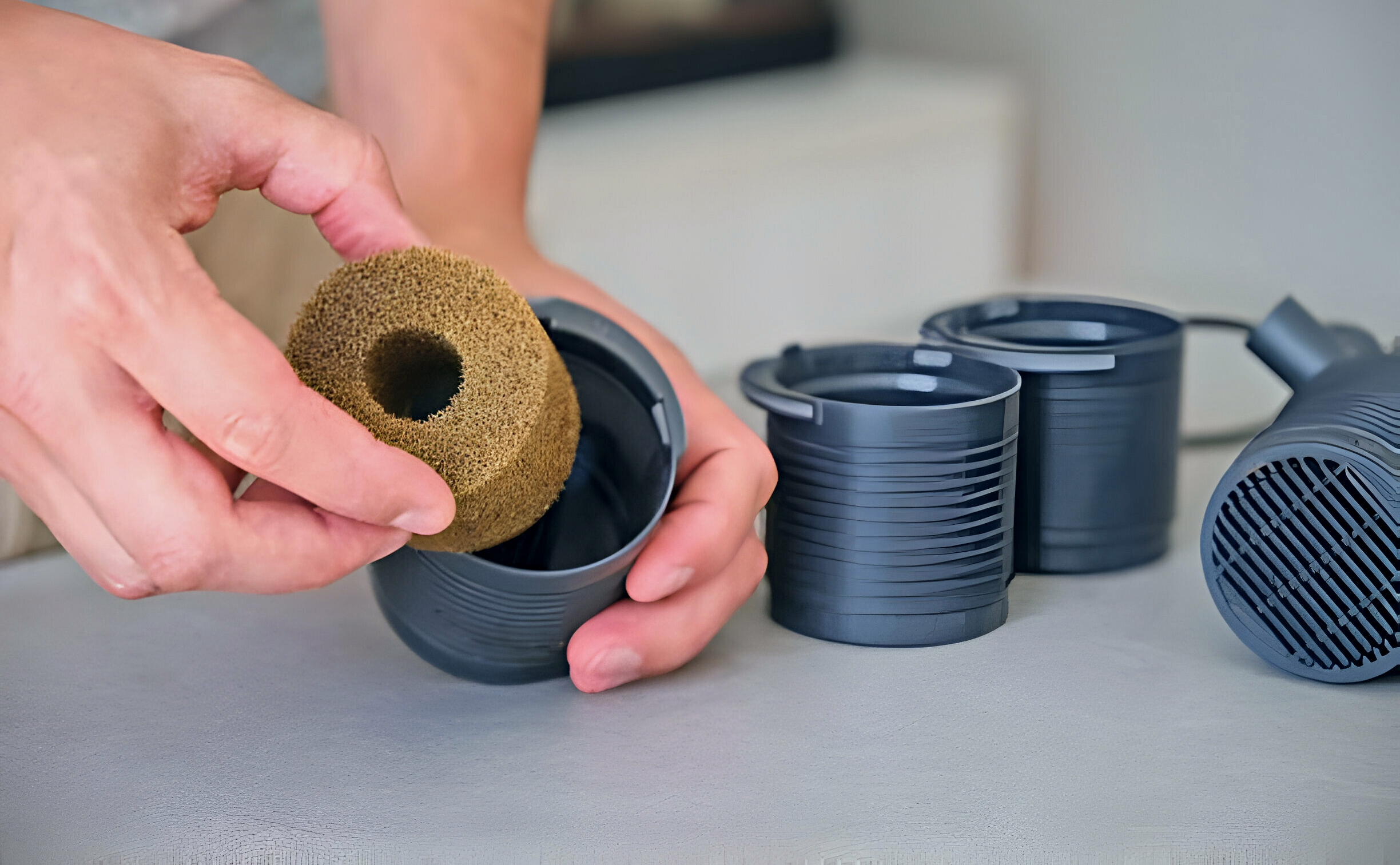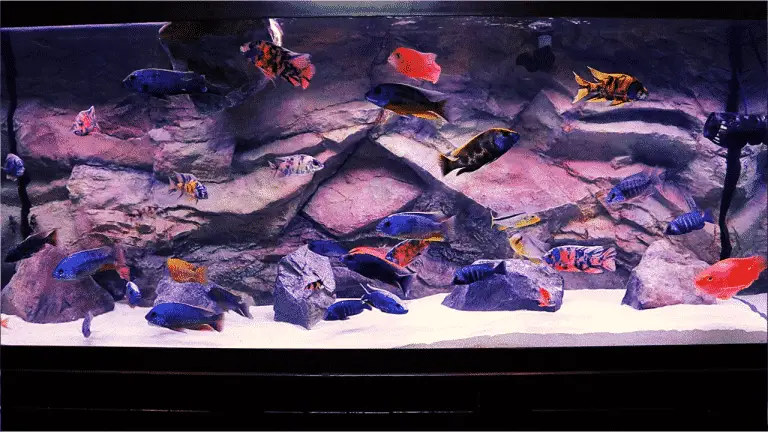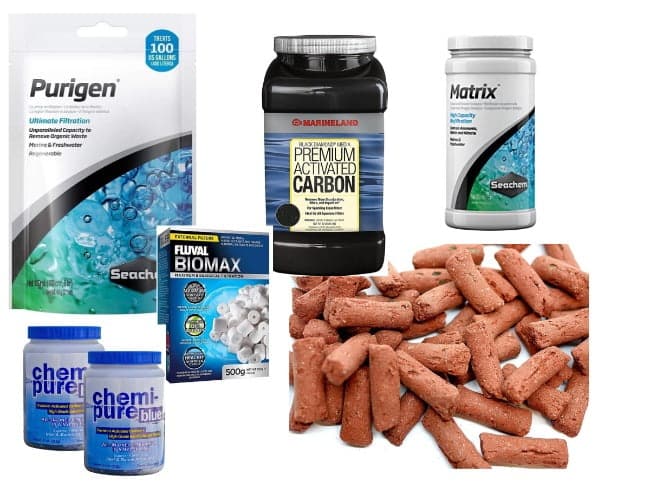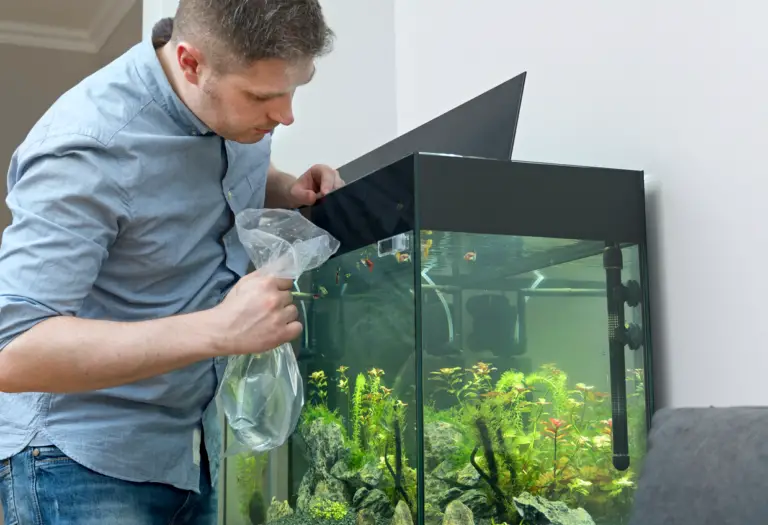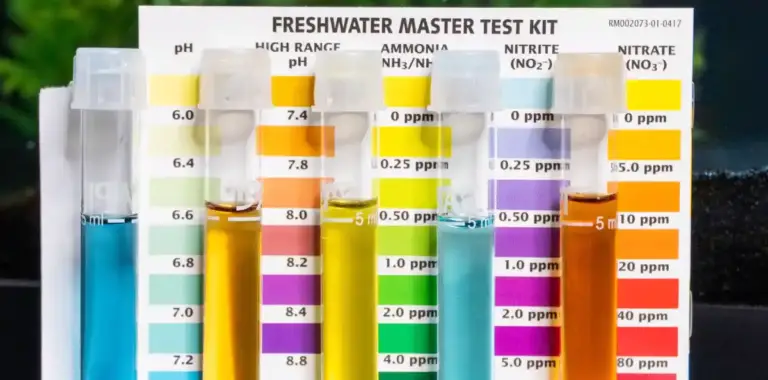Mechanical Media 101 — A Complete Guide
Hey there, fellow fish enthusiasts! If you’re looking to level up your aquarium game and dive deeper into the world of filtration, you’ve come to the right place.
In this guide, we’re going to explore everything you need to know about mechanical media. From its role in trapping debris to advanced techniques for optimal water clarity, we’ll cover it all.
So, grab your nets and get ready to unlock the secrets of mechanical media!
What Is Mechanical Media?
Mechanical media is the physical filtration components in your aquarium setup, such as filter pads, sponges, and floss. Their primary role is to trap and remove solid debris from the water column, preventing it from circulating and causing harm to your aquatic pets.
Now, why is mechanical filtration so crucial for your fishy friends? Think of it as the first line of defense against pollutants in your tank. By capturing particles like uneaten food, fish waste, and plant debris, mechanical media helps maintain pristine water quality.
How Mechanical Media Works
Ever wondered how those sponges and pads in your aquarium filter do their magic? Let’s learn about the mechanics behind mechanical media.
Mechanical media works by physically trapping and removing debris as water passes through it. Think of it like a sieve, catching particles of various sizes and preventing them from circulating in the water column.
These media typically have porous structures that provide ample surface area for debris to adhere to, effectively filtering it out of the water. As water flows through the media, solid particles get snagged in the pores, leaving the water cleaner and clearer.
In terms of particle size removal, mechanical media can capture a wide range of debris, from large visible particles like fish waste and uneaten food to finer particles like algae and sediment. However, it’s essential to choose the appropriate density and type of media to ensure efficient filtration for your specific aquarium setup.
Types of Mechanical Media
When it comes to mechanical filtration in your aquarium, there’s a wide array of options to choose from. Let’s explore some of the most common types:

- Filter pads/sponges: These media come in various densities and shapes, allowing water to pass through while trapping debris. Sponges are excellent for mechanical filtration and can be easily rinsed or replaced when dirty.
- Filter floss: Think of filter floss as a fine net that catches even the tiniest particles suspended in the water. Its fluffy texture provides ample surface area for trapping debris, making it highly effective in maintaining water clarity.
- Filter socks: These fabric sleeves slide over the intake or overflow pipes in your filtration system, acting as a barrier to large debris. While they excel at capturing larger particles, they may need frequent cleaning or replacement to prevent clogging.
- Micron filter bags: Designed with ultra-fine mesh material, micron filter bags excel at removing microscopic particles from the water. They’re ideal for polishing water to crystal clarity and are often used in conjunction with other mechanical media for comprehensive filtration.
Each type of mechanical media has its strengths and limitations, so it’s essential to consider your aquarium’s specific needs when choosing the right combination for optimal filtration.
Pros and Cons of Mechanical Media
Let’s take a closer look at the upsides and downsides of incorporating mechanical media into your aquarium filtration system.
Pros
- Debris removal: Mechanical media excels at capturing solid debris like uneaten food, fish waste, and plant matter, preventing them from circulating in the water column and compromising water quality.
- Improved water clarity: By trapping particles suspended in the water, mechanical media helps to clarify the aquarium water, creating a cleaner and more aesthetically pleasing environment for your fish and plants.
- Customizable filtration: With a variety of mechanical media options available, you can customize your filtration setup to suit the specific needs of your aquarium, whether you need coarse filtration for large debris or fine filtration for microscopic particles.
Cons
- Regular maintenance required: Mechanical media needs to be cleaned or replaced regularly to maintain its effectiveness. Failure to do so can lead to clogging and decreased filtration efficiency, potentially compromising water quality.
- Potential for clogging: Depending on the type of mechanical media used and the amount of debris in the aquarium, there’s a risk of the media becoming clogged, which can impede water flow and increase the workload on your filtration system.
- Limited filtration capacity: While mechanical media is excellent at removing solid debris, it may not be sufficient on its own to address other types of pollutants, such as dissolved organic compounds or harmful chemicals.
Choosing the Right Mechanical Media
Picking the perfect mechanical media for your aquarium can feel like finding the right puzzle piece. Here are some factors to consider:
- Tank size: The size of your aquarium plays a significant role in determining the type and amount of mechanical media you’ll need. Larger tanks typically require more robust filtration systems with ample mechanical media to handle the increased waste production.
- Types of fish and plants: Consider the inhabitants of your tank. Fish species that produce a lot of waste or are messy eaters may require more efficient mechanical filtration. Similarly, densely planted tanks may benefit from finer mechanical media to prevent clogging while still capturing debris.
- Specific filtration needs: Assess any specific filtration requirements your aquarium may have. For example, if you have sensitive or delicate species that are intolerant of high levels of particulate matter, you may need finer mechanical media to ensure pristine water quality.
- Water parameters: Take into account your aquarium’s water parameters, such as pH, hardness, and temperature. Some mechanical media may be more suitable for certain water conditions than others, so be sure to choose media that are compatible with your aquarium’s environment.
By considering these factors, you can select the right mechanical media to meet the unique needs of your aquarium, ensuring efficient filtration and a healthy environment for your aquatic friends.
Installing and Using Mechanical Media
Alright, you’ve chosen the perfect mechanical media for your aquarium, and now it’s time to put it to work. Here’s a step-by-step guide on how to install and use mechanical media effectively:

- Choose the right location: Start by deciding where to place your mechanical media. Most aquarium filters have designated compartments or chambers for mechanical media. Consult your filter’s instructions to locate the appropriate slot.
- Rinse the media: Before introducing it to your tank, rinse the mechanical media thoroughly with dechlorinated water. This step removes any dust or residue that might cloud your water when it’s first added.
- Place the media: Carefully add the rinsed mechanical media to its designated filter compartment. Make sure it’s evenly distributed to allow water to flow through it effectively.
- Monitor the flow: Keep an eye on the water flow rate through the mechanical media. It’s essential that water flows through it at a steady pace to ensure optimal contact and filtration. Adjust your filter if necessary.
- Maintenance: Mechanical media is not a “set it and forget it” solution. Regular maintenance is crucial. Check the manufacturer’s guidelines for recommended cleaning intervals. Typically, you’ll need to clean or replace mechanical media every 2-4 weeks, depending on the bioload of your aquarium.
- Observe your aquarium: Pay close attention to any changes in your aquarium’s water quality, such as clarity and particulate levels. If you notice any issues, such as reduced flow or cloudy water, it may be time to clean or replace your mechanical media.
By following these steps and staying vigilant about maintenance, you’ll ensure that your mechanical media continues to work effectively in maintaining a healthy and clear aquarium environment.
Troubleshooting Common Issues
So, your aquarium’s mechanical media isn’t quite living up to expectations? Don’t worry — we’ve got you covered with some handy troubleshooting tips.
Clogging
If your mechanical media seems to be clogging up faster than you can say “water change,” try these solutions:
- Increase cleaning frequency: Consider cleaning or rinsing your mechanical media more often to prevent buildup and maintain optimal flow.
- Check for overfeeding: Excess food can contribute to clogging. Adjust your feeding routine to ensure you’re not overfeeding your fish.
- Upgrade to finer media: If you’re constantly battling clogs, consider switching to a finer-grade mechanical media to capture smaller particles without getting bogged down.
Decreased Filtration Efficiency
If your mechanical media isn’t pulling its weight in keeping your aquarium water clean, try these troubleshooting tips:
- Check for proper installation: Ensure that your mechanical media is installed correctly and isn’t bypassing water flow.
- Assess media condition: If your media looks worn out or degraded, it may be time for a replacement.
- Consider additional filtration: If your aquarium’s bioload has increased or you’ve added more fish, it might be time to supplement your mechanical media with additional filtration, such as a secondary filter or a protein skimmer.
By addressing these common issues head-on, you’ll ensure that your mechanical media keeps your aquarium water crystal clear and your fish happy and healthy.
Advanced Tips and Best Practices
Ready to take your aquarium filtration to the next level? Here are some advanced tips and best practices for maximizing the effectiveness of your mechanical media.
Layering Media
One effective technique is to layer different types of mechanical media in your filtration system. Start with a coarse media, like filter pads or sponges, to trap larger debris. Then, add a finer media, such as filter floss or micron bags, to capture smaller particles. This layered approach ensures thorough filtration and prevents premature clogging of finer media.

Customizing Media
Don’t be afraid to get creative and customize your mechanical media to better suit your aquarium’s specific needs. For example, you can cut or shape filter pads to fit snugly into your filter compartments or combine different types of media to target specific filtration challenges. Experimenting with different combinations can help you achieve optimal water clarity and quality in your aquarium.
Dive Deeper With Expert Guidance!
Remember, your aquatic friends rely on you to provide them with a clean and healthy habitat, and mechanical media is your trusty sidekick in achieving just that. Apply the tips and advice shared here to up your aquarium filtration game and ensure the well-being of your underwater companions.
Ready to take your skills to the next level? Contact KaveMan Aquatics for personalized coaching to fine-tune your aquarium maintenance routine and elevate your fishkeeping experience.
Don’t let your journey end here — explore Aquabuildr, the ultimate fish-keeping app, to create custom tanks with ease and precision. With its intelligent algorithm and user-friendly interface, Aquabuildr empowers you to build and maintain the perfect aquatic ecosystem for your finned friends.
Download the app from the Google Play Store or Apple App Store for FREE!

-
Mechanical Media 101 — A Complete Guide
Explore the essentials of mechanical media in aquarium filtration with our comprehensive guide. Let’s dive in!

